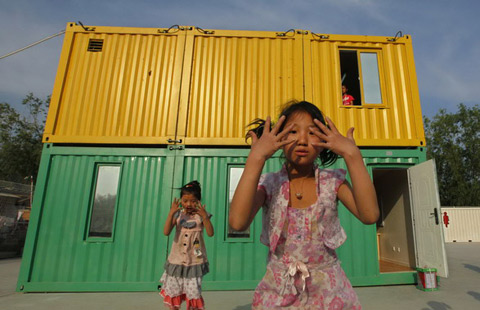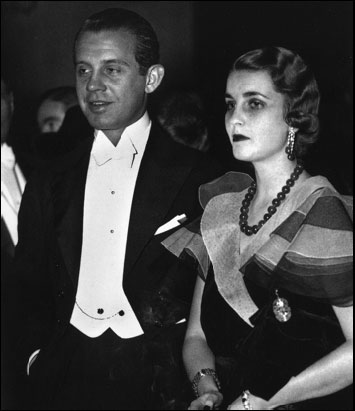Perfection in a necklace
Updated: 2014-04-09 07:17
By Kitty Go in Hong Kong (China Daily)
|
|||||||||||
The historically important Hutton-Mdi-vani jadeite necklace fashioned out of 27 beads reputedly from the Qing Dynasty's (1644-1911) imperial court sold at Sotheby's this week for HK$214 million ($27.44 million), over double the estimate of HK$100 million.
The draw of this piece, last owned by a private Asian collector, is not only its illustrious provenance that marries Western old-money and imperial China but also the involvement of Cartier, one of the greatest jewelers in the world. Also to consider is the rarity and magnificent size of the beads (19.2 to 15.4 mm) of a consistent, even luminous, green.
"This jadeite bead necklace with a storied past is the epitome of the mysterious and captivating beauty of jadeite, the most revered Oriental gemstone, and evokes the glamor of distinguished style icons of both China and the West at the turn of the last century. It stands as the most important piece of jadeite jewelry known to the world," says Quek Chin Yeow, deputy chairman and head of the jewelry department at Sotheby's Asia.
This necklace with a circular art deco ruby-and-diamond clasp by Cartier was originally a gift from retail tycoon Frank Woolworth to his daughter Barbara Woolworth Hutton on her wedding to Georgian Prince Alexis Mdi-vani. She didn't wear the necklace at her wedding.
"Instead, she wore a pearl necklace owned by Marie Antoinette (the last queen of France) - she had choices!" says Quek Chin Yeow. Hutton first wore it publicly on her 21st birthday. A photo also shows her wearing it on a night out at the Metropolitan Opera House in New York in 1933.

Jade is a general term that encompasses jadeite, a glassy and translucent stone that comes in green, white, lavender and yellow and nephrite, a porous stone usually used for carving large vessels and figurines. For jewelry collectors, it is only jadeite that is considered gem quality and it is jadeite in deep, kingfisher green that is classified "imperial jade" and is greatly admired and coveted.
But there is "imperial jade" and there are "jadeite beads from the Qing imperial court". The gem was introduced from Myanmar to the Qing court in the 18th century and was quickly picked up by the ruling class. It was originally worn only by Qing emperors, Empress Dowager Cixi and senior officials.
As the Qing declined in the late 19th century, many imperial treasures were taken out of the palaces and some like these beads, ended up in Europe fashioned into haute joaillerie by Cartier in the early 1930s. (Cartier records show the Hutton-Mdivani necklace was made in 1933.) Their massive grape-size beads, unsurpassed quality and deep green color strongly suggest that the Hutton-Mdi-vani beads were very likely worn at the imperial court.
Whether they are jadeite beads from the Qing court or imperial jade beads from this century, the ultimate piece for any jadeite collector to acquire is a bead necklace which is simple, subtle, unassuming and stealthily appreciated only by connoisseurs.
The necklaces are fashioned using either round beads or cabochon cuts because jadeite's inherent iridescence makes faceting or carving unnecessary. To keep the quality, color, shine and patina consistent within a single strand necklace, all beads have to come from a single boulder, which should yield at least three times the amount of beads required to complete a necklace.
The Hutton-Mdivani necklace remained in the Mdivani family for 50 years until it was sold in 1988 for $2 million, making it then the most expensive piece of jadeite jewelry in the world. In 1994, Christie's Hong Kong sold it at auction for $4.2 million, thus bringing the price of jadeite jewelry to an unprecedented level.
features@chinadaily.com.cn
|
Barbara Hutton wore the necklace at the Metropolitan Opera in New York in 1933. Photos provided to China Daily |
(China Daily 04/09/2014 page19)
Today's Top News
China, Israel vow to further deepen cooperation
China stresses ban on kindergarten drugs
More small firms to enjoy tax breaks
First 24-hr Beijing bookstore opens
Pro-Russians declare independence in Donetsk
China continue MH370 signals hunt
Carrier visit shows transparency
Xinjiang vows to stop extremism
Hot Topics
Lunar probe , China growth forecasts, Emission rules get tougher, China seen through 'colored lens', International board,
Editor's Picks

|

|

|

|

|

|






